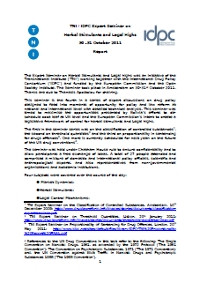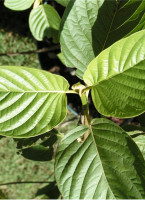Expert Seminar on Herbal Stimulants and Legal Highs TNI / IDPC Expert Seminar 30 -31 October 2011
Topics
A grey area has emerged between what is legal and what is not as states struggle with how to respond to the many new synthetic compounds emerging onto the market.

A grey area has emerged between what is legal and what is not as states struggle with how to respond to the many new synthetic compounds emerging onto the market. Of the various types of ‘Legal highs’ the seminar focused on stimulants because of the parallels with the other main drug-policy issue of the moment; i.e. the status of traditional herbal stimulants. These older discussions have been reinvigorated by: Bolivia’s efforts to de-schedule coca-leaf at UN level; the debates on the status of khat between EU States, and of kratom across Asia; and the increasing stride of legitimate cannabis use on the domestic front, as in for example Spain.
The seminar aimed to consider the legal responses of various jurisdictions to these issues and the lessons that can be drawn. Specific attention was to be directed at whether traditional criminal justice models suit legal highs or whether medicines law or other types of legal framework would be more appropriate. Broadening out to a policy-perspective, the seminar sought discussion of strategies to diminish the dominance of the concentrated and more harmful stimulant substances and steer the market towards milder forms. Whether or not, to this end, milder substances should be made licit and available, was an issue put directly on the table.
The Expert Seminar on Herbal Stimulants and Legal highs was an initiative of the Transnational Institute (TNI) and the International Drug Policy Consortium (IDPC) and funded by the European Commission and the Open Society Institute. The Seminar took place in Amsterdam on 30-31st October 2011. The seminar was held under Chatham House rule to ensure confidentiality and to allow participants a free exchange of ideas. A total of 27 people attended and comprised a mixture of domestic and international policy officials, the judiciary, and practitioners as well as representatives from non-governmental organisations and academic institutions.
Four themes were covered over the course of the day:
- Market Dynamics;
- Herbal Stimulants;
- Legal Control Mechanisms;
- EU Strategies on New Substances.
The meeting ended on a note of opportunity, but also urgency. It was felt that there is a real danger of unthinking replication of inflexible, traditional drug control models at the local, EU, and UN levels whereas policy-makers could and should use legal highs to begin experimenting now with frameworks to find ways to drive the markets towards less harmful substances and less harmful patterns of use. Experts agreed that a depth of perspective had been achieved through the discussion which was valuable but there was only a short time in which the detail could be hammered out.
Pages: 31


